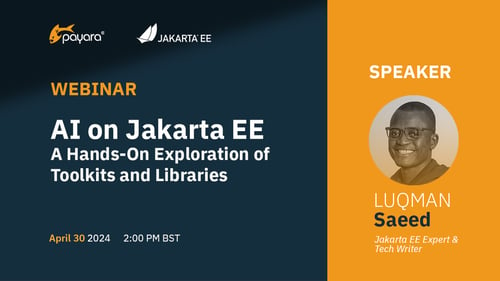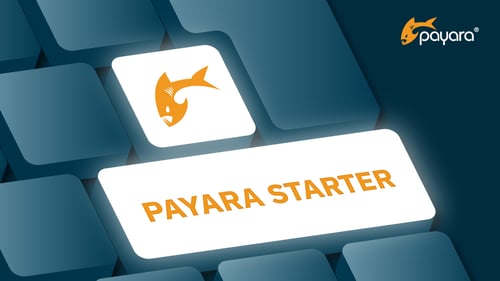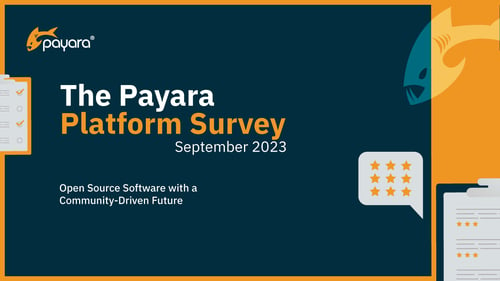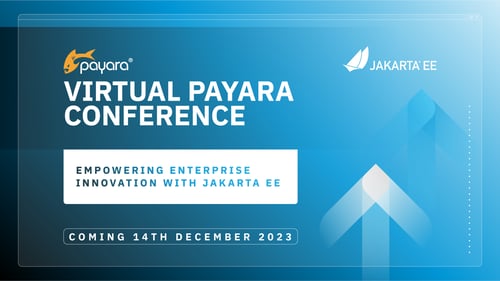Posts tagged JakartaEE (3)
The Payara Monthly Catch - April 2024
Published on 29 Apr 2024
by Chiara Civardi
Topics:
Java EE,
Payara Micro,
Microservices,
JakartaEE,
Payara Server,
New Releases,
Payara Events,
Payara Enterprise,
Payara Community,
Payara Cloud
|
0 Comments
All aboard, Payara Community! It's time to hoist the sails and set course for new adventures in May. But before we do, let's take a look back at the treasures we uncovered in April. We've gathered our favorite catches from the depths to share with you, ready to power up your Jakarta EE applications and propel you towards success! Join us as we navigate through the highlights of the month in our latest roundup
Join Live Webinar - AI on Jakarta EE: A Hands-On Exploration of Toolkits and Libraries
Published on 22 Apr 2024
by Dominika Tasarz
Topics:
JakartaEE,
news and events,
Payara Events,
AI
|
0 Comments
Join us for our next free virtual event to take the first step towards building AI-powered Jakarta EE applications:
AI on Jakarta EE: A Hands-On Exploration of Toolkits and Libraries
Tuesday, the 30th of April, 2pm BST
Register: https://www.crowdcast.io/c/wfynmcu0b5cm
The Payara Monthly Catch - March 2024
Published on 29 Mar 2024
by Chiara Civardi
Topics:
Java EE,
Payara Micro,
Microservices,
JakartaEE,
Payara Server,
New Releases,
Payara Events,
Payara Enterprise,
Payara Community,
Payara Cloud
|
0 Comments
The Payara Monthly Catch
Published on 08 Feb 2024
by Valentina Kovacic
Topics:
Java EE,
Payara Micro,
Microservices,
JakartaEE,
Payara Server,
New Releases,
Payara Events,
Payara Enterprise,
Payara Community,
Payara Cloud
|
0 Comments
Enterprise Batch Processing with Jakarta Batch - Part 3
Published on 12 Dec 2023
by Luqman Saeed
Topics:
JakartaEE,
Jakarta EE,
Batch Processing
|
0 Comments
In the journey through our Jakarta Batch blog series (see Part 1 here and Part 2 here) , we've taken a deep dive into the architecture of batch jobs, the inner workings of chunks, and the best practices for optimising their processing. Now, it's time to shed light on the less-discussed but equally vital aspect of batch processing: the task-oriented approach, specifically the role of batchlets in Jakarta Batch jobs. We'll also explore how to effectively monitor and manage batch job lifecycles to maintain efficiency and reliability.
What’s New In The Nov 2023 Payara Platform Release?
Published on 16 Nov 2023
by Luqman Saeed
Topics:
JakartaEE,
Payara Platform,
Payara Enterprise,
Payara Community,
Jakarta EE
|
0 Comments
Splashing onto the scene with a tidal wave of updates, the November 2023 release of Payara Platform is here. This release brings enhancements, security fixes, and bug fixes, ensuring a more robust and efficient environment for your mission critical workload. Payara Enterprise 6.8.0 comes with 4 improvements, 3 bug fixes, 1 security fix and 1 component upgrade. Payara Community 6.2023.11 also comes with 4 improvements, 3 bug fixes, 1 security fix and 1 component upgrade.
Virtual Payara Conference: Full Schedule
Published on 14 Nov 2023
by Priya Khaira-Hanks
Topics:
JakartaEE,
Java,
Jakarta EE
|
0 Comments
Our pioneering virtual business and technology conference will take place on December 14th. Gain unique insight into Jakarta EE from the best in the business!
We have designed the programme to cater to all levels of Jakarta EE knowledge - learn as a leader! The day-long program has a focus on educating Java professionals and business leaders about the power and potential of Jakarta EE.
The conference is totally virtual, so you can join from anywhere in the world. You can also pick and choose which sessions to join, and all those who registered will be able to access recordings to watch at their leisure.
Read on for the full schedule...
Read the Payara Platform Survey 2023!
Published on 31 Oct 2023
by Priya Khaira-Hanks
Topics:
MicroProfile,
JakartaEE,
Jakarta EE
|
0 Comments
It's time to launch the results of our Payara Platform Survey, 2023.
We recently reached 150,000 monthly users, so it was time to take stock of this vast global community.
We asked questions about Payara Platform, Jakarta EE and Java. What improvements do you want? What versions are your favourites? What IDEs, cloud vendors, databases and more are the most popular?
The results make for fascinating reading, with your preferred stack choices surprising lots of our Payara engineers. Read the report to find out if your organisation is in line with the wider community.
The Payara Monthly Catch October 2023
Published on 30 Oct 2023
by Priya Khaira-Hanks
Topics:
Microservices,
MicroProfile,
JakartaEE,
Jakarta EE
|
0 Comments
It's time for the October Payara Monthly Catch! It might be Halloween soon, but our monthly news roundup will protect you from the scary thought of missing out on anything from the world of Java, Jakarta EE, MicroProfile, and open source. We collate all the very best content as your TREAT for the month 🎃🦇👻
A key Java survey came out this month - theAzul State of Java Survey and Report. With 2000 respondents, it was interesting to learn that Java 11 was the most popular JDK version, and that 72% were using non-Oracle solutions. We were also pleased that 19% of respondents reported Payara as their application server of choice, beating GlassFish, TomEE & WildFly!
What's New in the October 2023 Payara Platform Release?
Published on 19 Oct 2023
by Luqman Saeed
Topics:
JakartaEE,
New Releases,
Jakarta EE
|
0 Comments
As the leaves take on a golden hue and the cool breeze of October sets in, we're thrilled to bring to the table the latest iteration of the Payara Platform. The October 2023 release features 3 bug fixes, 9 component upgrades, 1 security fix and 1 improvement for Payara Enterprise 6.7.0. Payara Community 6.2023.10 also features 4 bug fixes, 9 component upgrades, 1 security fix and 1 improvement.


/wellness%20wednesday/wellness-wednesday-jess-1.jpg?width=500&name=wellness-wednesday-jess-1.jpg)





